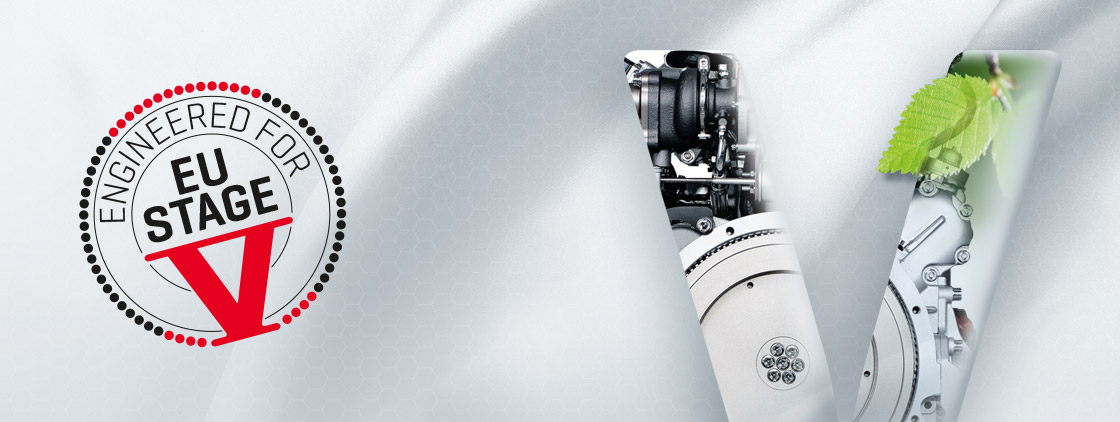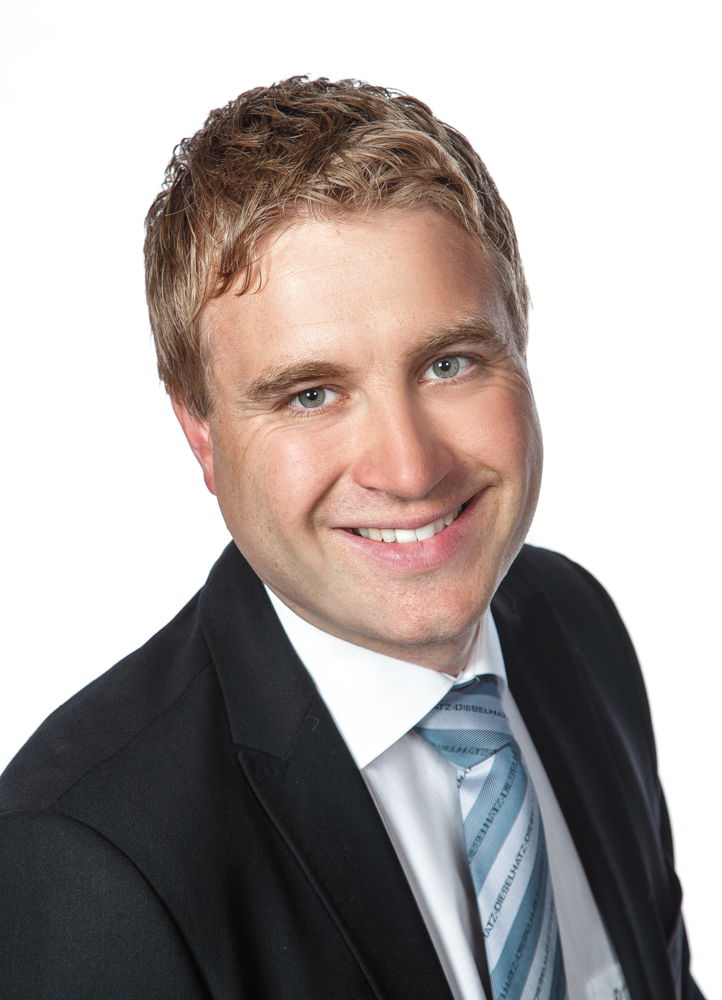EU Stage V (Part 1) – a clear regulation that presents a challenge
EU Stage V governs the future emissions of machinery with a combustion engine. The following aspects will be discussed in this three-part article series.
20 March 2018

Nothing is more constant than change, and this applies to emission regulations as well. The EU Stage V emission standard, officially known as Regulation (EU) 2016/1628, places new requirements on engines and machines. It superseded the former directives (97/68/EC) on 1 January 2017. Since then, manufacturers of engines and machines have been working to achieve compliance by 1 January 2019.
From this day onward, engines without EU Stage V will no longer be permitted to be manufactured. Because fundamental changes to laws cannot be implemented abruptly by industry, EU Stage V has provided for a transitional phase that will extend all the way to 2022. Engine and machine manufacturers can adapt their products during this period. What machines does the Stage V regulation apply to? The entire EU Stage V standard is based on a finely structured categorisation of different applications and machine types and, like many specifications, also describes exceptions and special regulations.
Categories make the difference
Legislators defined a total of 10 engine categories for EU Stage V, which in turn are linked to different applications. The following three categories will serve as examples to illustrate this: Non-Road Engines (NRE) are engines in machines that can be moved, but that are not operated on public roadways as are motor vehicles. These can be forklifts, excavators or mobile pumps or power generators. Another category is Inland Waterway Propulsion (IWP). These are engines with a power output exceeding 19 kilowatts for direct or indirect propulsion in inland water transportation. A third example is Inland Waterway Auxiliary (IWA), which refers only to auxiliary engines in inland water transportation with more than 19 kilowatt.
Within the 10 categories, the manufacturers of engines and machines will find their applications partially with differing specifications. The complete list of all categories is contained, for example, in an FAQ document from the CECE – Committee for European Construction Equipment or can be downloaded from the VDMA – German Mechanical Engineering Industry Association.
(Insert)
EU Stage V engine categories
| Engine category | Description |
| NRE | Engines for mobile machinery that is not operated on public roadways, such as a motor vehicle. |
| NRG | Engines having a reference power that is greater than 560 kW, exclusively used in generating sets. |
| NRS | Spark-ignited engines with a reference power that is less than 56 kW. |
| NRSh | Spark-ignited engines with a reference power that is less than 19 kilowatts, exclusively used in hand-held machinery. |
| IWP | Engines used for the direct or indirect propulsion of inland waterway vessels with a reference of power of more than 19 kilowatts. |
| IWA | Auxiliary engines exclusively used for the direct or indirect propulsion of inland waterway vessels with a reference power of more than 19 kilowatts. |
| RLL | Engines exclusively used for propulsion in locomotives. |
| RLR | Engines exclusively used for propulsion in railcars. |
| SMB | Spark-ignited engines exclusively used in snowmobiles. |
| ATS | Spark-ignited engines exclusively used in all terrain and side-by-side vehicles. |
No rules without special rules
Manufacturers of engines and machines must be familiar with a variety of exceptions within the Stage V categorisation. For example, a special regulation applies to engines in stationary machines. Stationary machines are those that are permanently installed in a fixed location and are not intended to be moved, such as a building emergency power generator. These machines generally are not subject to the Stage V standard. Engines and machines for military and police units (Armed Forces) and for lifeboats are also exempt.
One may ask where these exceptions come from, and partially it will surely be the result of the efforts of interest groups. However, there are also special regulations that are absolutely useful, such as in "explosive environments". Legislators exercised special care in this regard when developing the EU Stage V. One example of an "explosive environment" is an offshore drilling platform. Because of gases and combustible fluids, this environment is very dangerous. The permanent risk of explosion must be reduced under all circumstances. Diesel particulate filters, as used by EU Stage V engines, could have exactly the opposite effect. They lower emissions by means of an additional combustion process under very high temperatures in the exhaust tract. This heat would present an additional and very significant danger in explosive environments.
However, there are also rather curious EU Stage V regulations, such as for inland waterway transportation. This area has been governed by a separate regulation that is roughly comparable with the emission values of the EU Non-Road Directive IIIA. The EU Stage V would require manufacturers to certify their engines for the relatively small Inland Waterway Auxiliary (IWA) market with more stringent emission values, which would be a complex and expensive process. The fact is that many engine manufacturers have already had suitable engines in their product line for quite some time. Certified non-road engines of the Emission Regulation IIIB even undercut the required EU Stage V emission values for IWA. The usefulness of a separate EU Stage V certification can therefore be questioned in this case. Many engine manufacturers see no reason for investments where a suitable and certified drive already exists. Action is required from legislators here. There is a need to some kind of solution for inland waterway vessels and their operators, perhaps in the form of an exception for this market.
Challenge for manufacturers
The different categories and special regulations demand very detailed knowledge from machine and engine manufacturers, and especially good planning for development and production during the transition period and beyond. For those manufacturers planning to produce and sell their engines and machines within individual EU countries and across the EU, the EU Stage V is achievable through a good strategy and planning.
For companies that are active worldwide, the planning and strategy can be far more complex. For example, the product range of machines and engines for worldwide distribution will expand considerably. While only engines in compliance with EU Stage V will be saleable in the EU, the production of engines and machines with higher emissions may continue to be reasonable for international sales. An economic feasibility calculation will be needed to decide this on a case-by-case basis.
The EU Stage V continues the trend toward more strict regulations on combustion engines emissions. From an environmental point of view, the reduction of harmful emissions is very welcome – and not only in machines and vehicles. However, for the commercial sector this will once again mean a huge effort and investments. If the laws were clearer and less encumbered by multifarious special regulations and extra certifications, engine and machine manufacturers would have more leeway and resources to develop real innovations for their industries.
Author: Bernhard Richter-Schützeneder, Head of Sales and Marketing, Motorenfabrik Hatz







